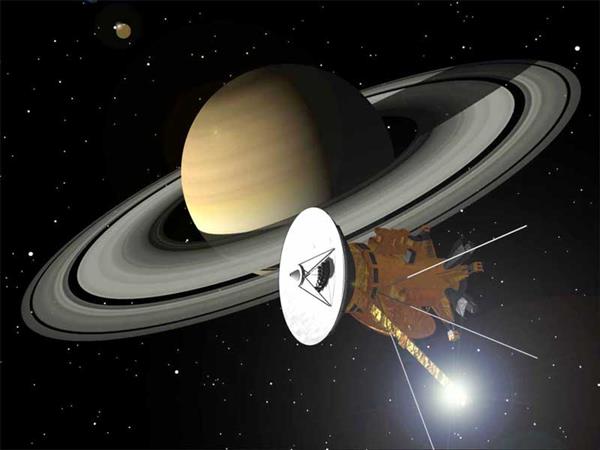 Close Topic Options
Close Topic OptionsCassini Spacecraft & Saturn
Cassini Spacecraft Saturn - Sciences, Education, Art, Writing, UFO - Posted: 16th Aug, 2017 - 11:11pm
Cassini Spacecraft & Saturn
Sunlight Glints off Liquid Lake on Titan
(SPACE.com)
Space / Astronomy Related News
SPACE.com - A flash of sunlight reflecting off a hydrocarbon lake on the surface of Saturn's Moon Titan has been spotted by NASA's Cassini spacecraft, confirming the presence of liquid on a part of the surface of the hazy satellite with many lake-shaped basins. Source: Yahoo! News: Space/Astronomy

Cassini Spacecraft & Saturn (Hover)
Saturn and Spacecraft Cassini
Hello! Earth is waving at you
This image is assembled from 1400 people waving at the Cassini spacecraft, which has been in orbit around Saturn since 2004. On July 19, the orbiter turned back and snapped a photo of the home planet it would never see again. NASA thought it was only fair that we wave back. Ref. Source 2

Cassini Spacecraft & Saturn (Hover)
Cassini Spacecraft & Saturn UFO & Writing Art Education Sciences
Cassini begins epic final year at Saturn
After more than 12 years studying Saturn, its rings and moons, NASA's Cassini spacecraft has entered the final year of its epic voyage. The conclusion of the historic scientific odyssey is planned for September 2017, but not before the spacecraft completes a daring two-part endgame. Ref. Source 2b.
Saturn and Spacecraft Cassini
Cassini reveals strange shape of Saturn's moon Pan
New images of Saturn's tiny moon, Pan, were taken on March 7, 2017, by NASA's Cassini spacecraft. These images are the closest images ever taken of Pan and will help to characterize its shape and geology. Ref. Source 8k.
Saturn and Spacecraft Cassini
I find it interesting the stuff we are finding out about Saturn, its rings and its moons from this spacecraft. Liquid lakes on the moon of Titan is a interesting find. I think between some moons around Jupiter and Saturn can be used to support human life.
Cassini Spacecraft & Saturn
Cassini says goodbye to a true Titan. Mere weeks away from its dramatic, mission-ending plunge into Saturn, NASA's Cassini spacecraft has a hectic schedule, orbiting the planet every week in its Grand Finale. On a few orbits, Saturn's largest moon, Titan, has been near enough to tweak Cassini's orbit, causing the spacecraft to approach Saturn a bit closer or a bit farther away. A couple of those distant passes even pushed Cassini into the inner fringes of Saturn's rings. Source 1l.
 TOPIC: Cassini Spacecraft & Saturn
TOPIC: Cassini Spacecraft & Saturn Space/Astronomy - Saturn's Moons
Space/Astronomy - Saturn's Moons